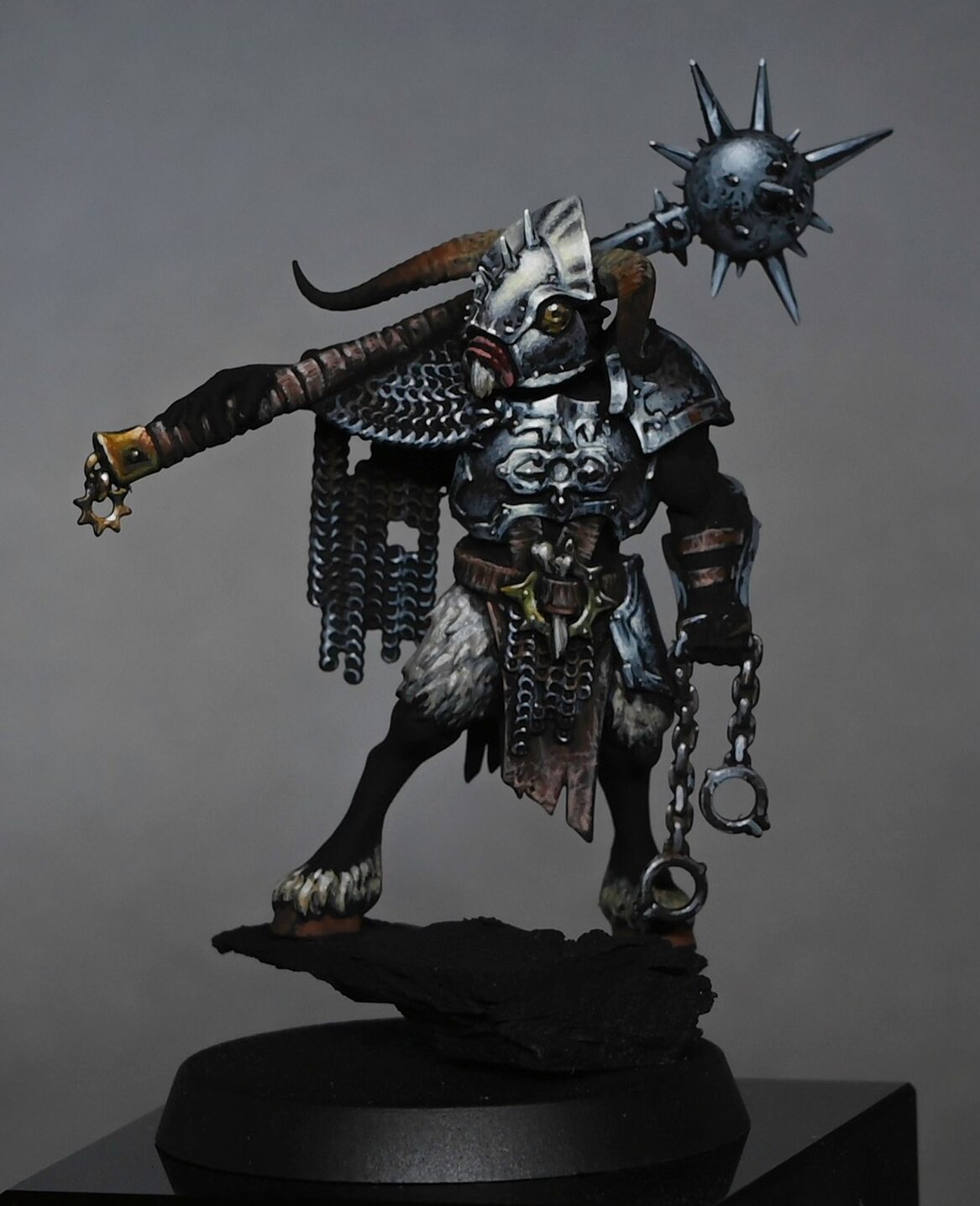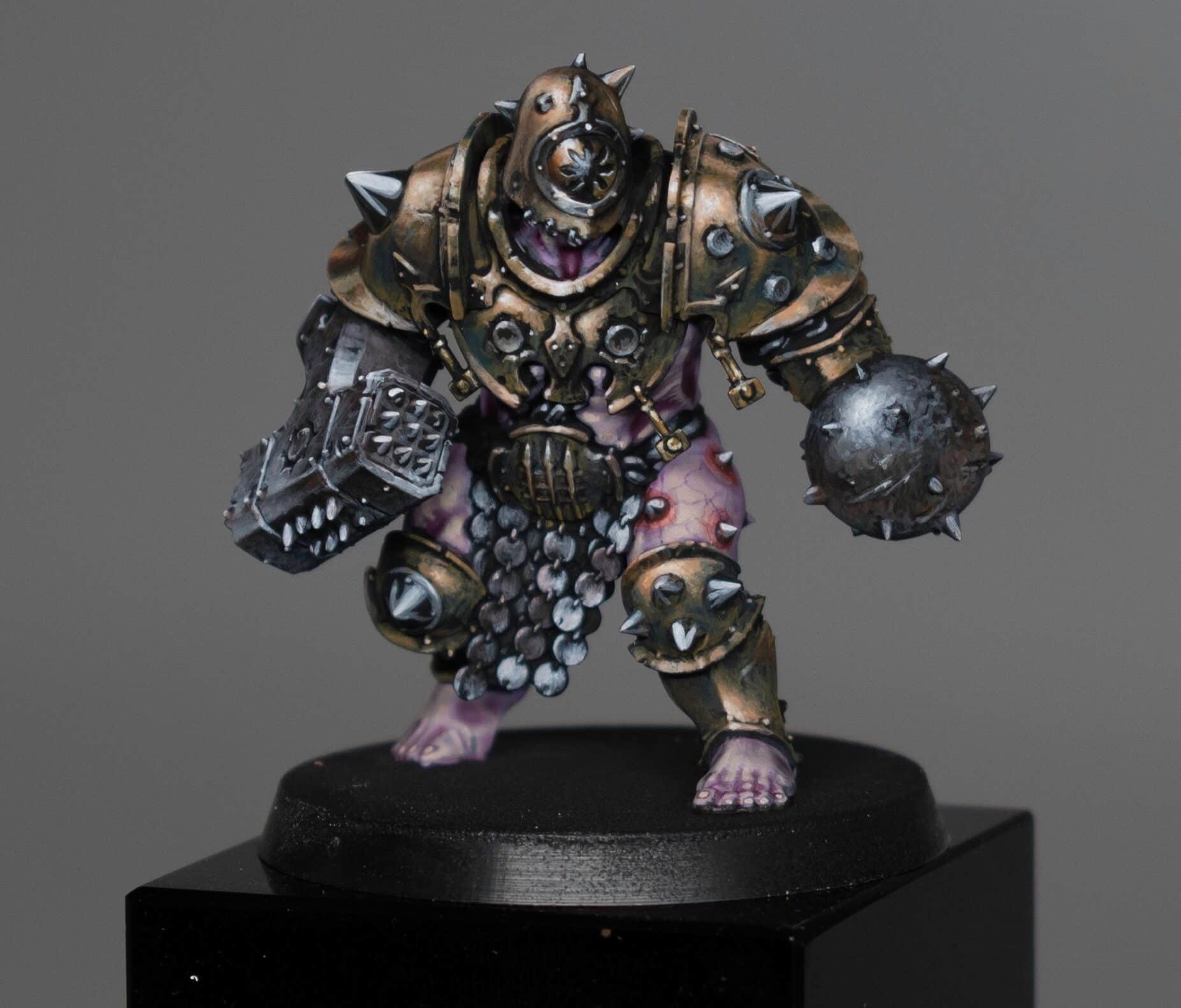This video shows how to paint a Warcry Witherlord from the Rotmire Creed warband, which can be found in the new Warcry Heart of Ghur box, which was sent to me by Games Workshop.
Materials and Paints Used
- Vallejo: Neutral Grey, Black
- Games Workshop: Deathworld Forest, Mournfang Brown, Rhinox Hide, Balor Brown, Hobgrot Hide, Bugman’s Glow, Morghast Bone, Moot Green, Yriel Yellow, Darkoath Flesh (Contrast Paint), Contrast Medium
- P3: Morrow White
Step-by-Step: How to Paint a Warcry Witherlord
Preparation and Base Coat
Begin by assembling your Witherlord model, sticking all parts together. Prime it black, followed by a zenithal coat using Vallejo Neutral Grey. The grey coat will serve as a base for the highlights, ensuring the colours painted on top aren’t overly bright.
Applying Base Colours
Start with Deathworld Forest, applying it in thin, watered-down layers. This model is painted to a high standard, requiring multiple thin coats for a smooth finish. For areas like bamboo sticks and his helmet, use Hobgrot Hide, applying in the same manner. For leather parts and wooden elements like the staff, use Mournfang Brown and Rhinox Hide respectively.
Skin Tones
For the skin, start with a base of Bugman’s Glow. This rich, pinkish tone contrasts well with the green of the cloak. The skin will appear quite vibrant initially but will be adjusted with glazes later.
Bone and Bamboo Details
Paint bone elements with Balor Brown and bamboo with Hobgrot Hide. Both elements are highlighted by adding small amounts of white to the base colours and applying successive, lighter layers. Focus on making the bamboo and bone distinct from each other, despite similar base colours.
Advanced Highlighting Techniques
Use a size 2 brush for most of the model, switching to a smaller brush for tight areas. The larger brush can cover bigger areas quickly and allows for softer highlights. Mix your paints on a wet palette, gradually adding white to your base colours for highlights. Remember to water down your paints for smooth transitions.
Glazing for Depth and Atmosphere
Mix Darkoath Flesh with Contrast Medium and flood the model. This will settle in the recesses and provide shading. Be careful not to let it pool excessively. After this, apply glazes to modify colours and add depth. For instance, a neutral grey glaze over the skin tones will tone down the pink and add a sickly quality, fitting for a Nurgle-themed model.
Final Touches and Base
Add final highlights with more white mixed into your base colours, focusing on the brightest areas. For the base, blend Deathworld Forest with black for a swampy look. Add Mod Podge for a wet effect, and sprinkle tea leaves or similar materials for additional texture.
More Warcry Tutorials to Explore!
If you don’t have an account, please sign up here! The website currently has over 350 video tutorials with steps and tips, plus a selection of PDFs. If you are not sure about joining, you can explore my free videos with a free membership, or take the plunge and become a full subscriber for full access.
If you’d prefer to support me on Patreon, please visit: https://www.patreon.com/RichardGray









